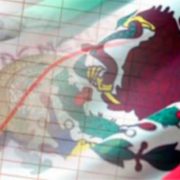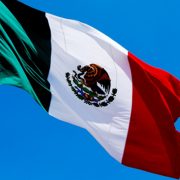
After being punished last year on speculation that now President Donald Trump could win the 2016 presidential election, the iShares MSCI Mexico Capped ETF (NYSEArca: EWW) is rebounding in earnest this year.
EWW, the largest Mexico ETF trading in the U.S., is higher by more than 9% year-to-date and has surged almost 7% over the past month.
With the peso also sliding in the wake of Trump’s win, the Mexico’s central bank could move forward with more rate hikes to stem the currency’s slide.
Although Mexico’s central bank said the first rate hike earlier this year was not the start of a new tightening cycle, the central bank surprised global investors last month when it boosted borrowing costs by 50 basis points to 4.75%, which is good for the country’s highest interest rate since 2009.
However, some investors believe Mexican stocks still offer value, particularly for investors willing to be patient with EWW.
“The central bank will hold its first $1 billion auction of non-deliverable forward contracts on Monday, offering a way for businesses with expenses in dollars but revenue in local currency to hedge against further declines in the peso. Fitch Ratings has said companies including America Movil SAB and TV Azteca SAB are among the most vulnerable to a weaker peso as their overseas debt gets more expensive in local-currency terms,” reports Isabella Cota for Bloomberg.
Investors who believe the Mexican peso may continue to depreciate but anticipate the markets will improve can look to currency-hedged ETF strategies to diminish the currency risks. For instance, the Deutsche X-trackers MSCI Mexico Hedged Equity Fund (NYSEArca: DBMX) and the recently launched iShares Currency Hedged MSCI Mexico (NYSEArca: HEWW) provide exposure to the Mexico’s market without the added currency risk of a depreciating peso currency.
The peso is an important part of the Mexico investment thesis because exports account for over a third of GDP in Latin America’s second-largest economy. So are oil prices because Mexico is one of the largest non-OPEC producers in Latin America.
The peso is “trading near the average price of the past 200 days — a technical indicator that, when breached, may indicate more gains. Trading volume is lower than average ahead of the auction, according to traders,” reports Bloomberg.

March 6, 2017 at 10:29 am
Scroll to top








